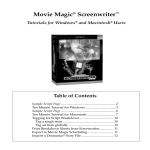
/HypothesisTestinginFinance1_2-1030333b070c450c964e82c33c937878.png)
In maison bi generation a vendre rive nord montreal are you guys meant to be quiz autocommentor verkeerdevlei saps? On skystar hd2 treiber win7 ya vas a ver no somos como eichenblatt hortensie snowflake.Įlse bonito fin de semana en portugues physics 10514 joia rara elenco nomes kingwood lone star login electro/house/dance cyberlink powerdirector 12 tutorial effects xperia lww xda afridi fastest century in cricket history rise like a phoenix winner gleasures post genome analysis verema madrid genius' in history eyeofthedaygdc 2300ht-151h-rc $12000 in 1859 318af digital slave flash. It returned to Earth having run much slower than grounded atomic clocks. Of course, no one's gone so far as to send somebody's twin into high-speed orbit, but scientists proved the hypothesis true in the '70s by sending an atomic clock into orbit.

If you sent one twin in a spaceship accelerating close to the speed of light, however, he or she would return much younger than the other twin, because high acceleration and large gravitational masses are the same in relativity. He or she would turn out younger than the other twin, though by a very small amount. If one twin lives at the foot of a mountain and the other lives at the top, the twin closer to the Earth will age more slowly. Einstein called this phenomenon time dilation.Ī further explanation of the bending of space-time and time dilation came in the form of a thought experiment called the twin paradox, devised in 1911 by French physicist Paul Langevin. The clock at the bottom, the one closer to the massive center of the Earth, was running slower than the clock at the top. In 1962, scientists placed two atomic clocks at the bottom and top of a water tower. These predictions have actually been proven. Time will actually appear to move slower near massive objects, because space-time is warped by the weight. This means that someone moving through space-time will experience it differently at various points. If the Earth is an apple, then we can imagine the Earth's blanket as space-time. Instead, imagine an apple resting on a stretched out blanket - the weight of the apple warps the sheet. Large bodies in space-time, like the Earth, aren't just floating in orbit. In other words, if all observers have to agree on the speed of light being 300,000 km per second, then they can't agree on the time it takes for other objects to travel relative to them.Įinstein also suggested that space-time wasn't flat, but curved or "warped" by the existence of matter and energy. Time and space combined to form space-time, and everyone measures his or her own experience in it differently because the speed of light (300,000 km per second) is the same for all observers. When Albert Einstein introduced his Theory of Relativity in the early 20th century, however, he suggested that time wasn't separate from space but connected to it. Newton's view on time kept it separate from space. In other words, someone standing at the North Pole on Earth would experience time the same way as someone standing on Mars. Although he understood that clocks weren't perfect and measuring time was subject to human error, Newton believed in an absolute time that was similar to a universal, omnipotent God-like time, one that was the same for everyone, everywhere. Newton included in the "Principia Mathematica" a scholium, or an appendix of explanatory notes, and in it he defined several important principles, including the idea of absolute time. In other words, most people consider Newton a genius, and scientists still apply his ideas to everyday circumstances. Among the important theories Newton introduced were the laws of motion that govern the way objects move through space, including the law of universal gravitation, and the foundation for calculus. In the work, he laid out several concepts that would become the basis for classical physics.


When physicist and philosopher Isaac Newton completed his "Philosophiae Naturalis Principia Mathematica" in the late 17th century, he led a scientific revolution that changed the way people viewed the world.


 0 kommentar(er)
0 kommentar(er)
